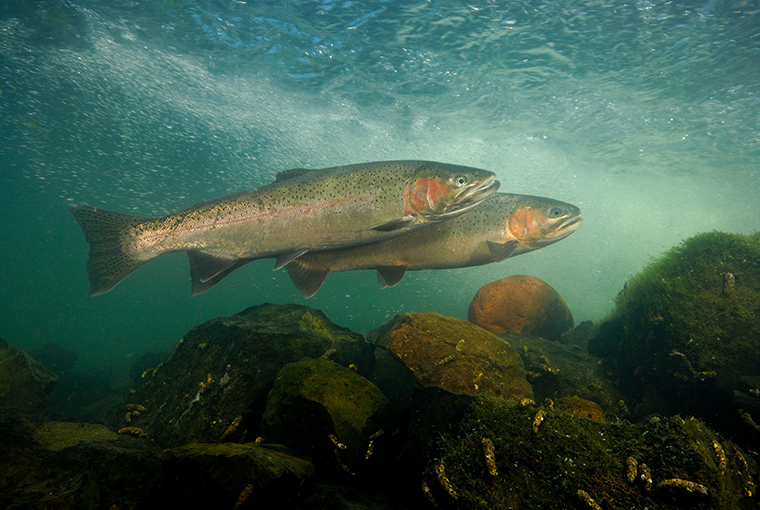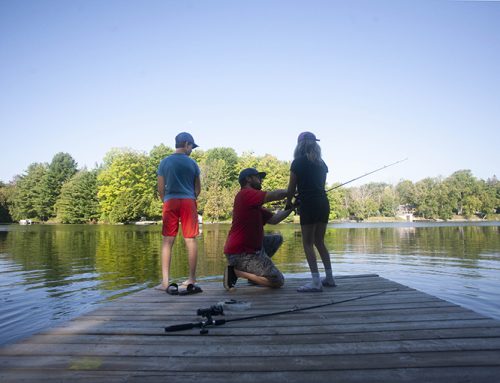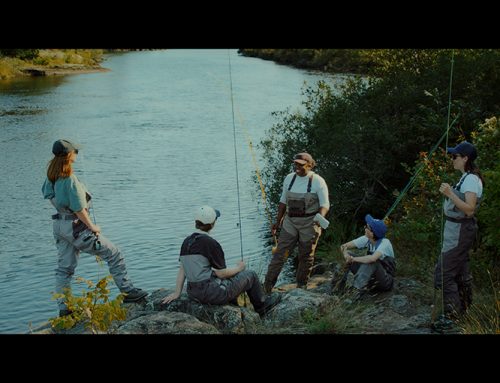
Fish numbers in six streams on Lake Superior’s north shore are declining.
Since 1991, the North Shore Steelhead Association (NSSA), in partnership with Ministry of Natural Resources (MNR), has documented wild steelhead populations in tributaries of western Lake Superior.
Troubling results for northwestern steelhead
The spring 2024 angler-driven study yielded troubling results.
“Anglers record the length, sex, and take a scale sample from each adult steelhead they catch during the spring run,” Kyle Stratton, the program’s MNR biologist, explained. “In a few pre-determined tributaries, steelhead are also marked with a fin clip and tagged.”
Stratton cautions “the biggest point from the estimates is to focus on the overall trend of the population as opposed to the specific estimated number.” However, the population estimates are disturbing. Three rivers within Thunder Bay’s city limits (the Neebing River, McVicar Creek and the McIntyre River) fared the best. Despite this, populations are now trending down. Other rivers fared worse. Cypress River, 40 kilometres east of Nipigon, once a steelhead stronghold, it is down to 770 fish.
Fry survival
NSSA President Tom Whalley believes this might be the result of recent weather trends that have created conditions detrimental to fry survival. “In three of the last ten years, rivers have dried up to nothing in the summer. And, fishing the last two to three years has been very slow,” he said.
“As disheartening as it is to see the results of the angler sampling, it is not a shock to those of us who have been fishing them for decades,” Ontario OUT of DOORS Senior Editor Gord Ellis, a multi-species guide said. “Initially, it felt like I was just missing the big runs. But the last couple of years, when I looked at key spawning areas in these rivers and didn’t see redds or paired fish, it started to sink in…the fish just aren’t there in the numbers they have been for decades…”
He has observed a notable increase in pike, walleye, perch, and bass in Nipigon Bay and wonders if they have been eating steelhead smolts. Ellis added, “These are freestone rivers that all but dry up during a drought. There have been recent summers when I could walk across the Jackpine or Cypress and not get my feet wet.”
Angling pressure
Even Black Bay’s Portage Creek is yielding bleak results. Ten years after angling pressure had been removed by access restrictions, the population was about 2,000 fish. Now, it is 39.
Jon George, a retired MNR biologist who launched the study in the early 1990s, and remains involved, notes Portage Creek feeds Black Bay, where the removal of commercial fishing aided the recovery of warmwater species. This, he said, corresponded with steelhead populations declines in rivers emptying into the bay.
Whatever the cause, there’s never been a better time to release your catch. “I don’t kill wild Lake Superior steelhead and haven’t for some time. With numbers this low, every adult is precious,” Ellis said.
Click here for more outdoors news






Leave A Comment